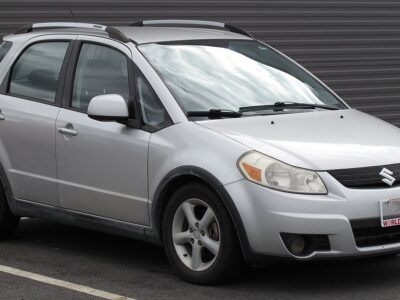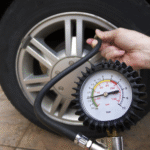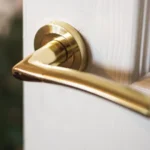
The Ultimate Guide to Replacing Toyota Camry Bushings: What You Need to Know

When it comes to keeping your Toyota Camry running smoothly, bushings may not be the first thing that comes to mind. However, these small, often overlooked components play a critical role in your vehicle’s overall performance. If you've noticed unusual noises, poor handling, or a rough ride, it's possible that your Camry's bushings need replacing. In this article, we’ll guide you through everything you need to know about replacing Toyota Camry bushings, from why they're important to how you can replace them yourself.
- What Are Bushings, and Why Are They Important?
- Common Signs of Worn-Out Bushings
- Why Should You Replace Bushings?
- Tools and Materials You’ll Need for the Job
- Step-by-Step Guide to Replacing Toyota Camry Bushings
- How Long Does It Take to Replace Bushings?
- Can You Drive With Worn Bushings?
- Types of Bushings You Can Use
- DIY vs. Professional Installation: What’s Best for You?
- Common Mistakes to Avoid When Replacing Bushings
- Conclusion: A Smoother Ride Awaits
What Are Bushings, and Why Are They Important?
Bushings are small, but incredibly important parts of your vehicle’s suspension system. They are made of rubber, polyurethane, or metal, and act as cushions that absorb shocks and vibrations between different components like control arms, sway bars, and the chassis. Think of them as the "shock absorbers" for your car's moving parts—without them, your Camry would experience a rougher ride and more wear and tear.
The Function of Bushings
- Absorb Vibrations: Bushings help to reduce the vibrations between the car's frame and suspension components.
- Control Movements: They allow controlled movement of the suspension and steering components, which helps maintain smooth handling.
- Protect Other Parts: Bushings also protect other suspension parts from damage caused by metal-to-metal contact.
Common Signs of Worn-Out Bushings
Before jumping into a replacement, it’s crucial to identify the symptoms that indicate your bushings need attention.
1. Unusual Noises
If you're hearing squeaking or clunking sounds while driving, especially when turning or going over bumps, worn-out bushings might be to blame.
2. Poor Handling or Steering
Worn bushings can cause your car to handle poorly, making it feel unstable or sloppy, especially when cornering.
3. Excessive Vibration
If the ride feels rougher than usual, with noticeable vibrations through the steering wheel or floor, your bushings could be worn out.
4. Uneven Tire Wear
A suspension that isn't properly aligned due to bad bushings can cause uneven tire wear, affecting the longevity of your tires.
Why Should You Replace Bushings?
Replacing bushings is important for several reasons:
1. Improved Ride Quality
Replacing worn-out bushings restores smooth handling, reducing the noise and vibration you feel while driving.
You may be interested in reading How to Replace Toyota Camry Tire Pressure Sensor: A Complete Guide
How to Replace Toyota Camry Tire Pressure Sensor: A Complete Guide2. Increased Vehicle Longevity
By addressing the issue early, you prevent further damage to suspension components, ensuring your Camry runs smoothly for longer.
3. Enhanced Safety
Worn bushings can affect the stability and control of your car, especially when turning or braking. Replacing them ensures better safety on the road.
Tools and Materials You’ll Need for the Job
Before you get started, make sure you have the right tools for the job. Replacing bushings isn't an overly complex task, but it does require some specialized tools.
- Jack and Jack Stands
- Socket Wrenches
- Pry Bar
- Bushing Removal Tool
- New Bushings
- Lubricant
Step-by-Step Guide to Replacing Toyota Camry Bushings
Now that you know the importance of bushings, let’s dive into how you can replace them yourself.
Step 1: Lift the Car and Remove the Wheel
The first step is to safely lift your Toyota Camry using a jack and secure it with jack stands. Once the car is safely elevated, remove the wheel to expose the suspension components.
Step 2: Locate the Bushings
Bushings are located on various suspension components, including the control arms, sway bar, and strut mounts. You’ll need to inspect the suspension components to identify which bushings are worn.
Step 3: Remove the Old Bushings
Using a socket wrench, remove the bolts or nuts that are securing the suspension components to the frame. After loosening these, carefully remove the old bushings using a pry bar or bushing removal tool.
Step 4: Install the New Bushings
Lubricate the new bushings with some lubricant to make the installation smoother. Slide the new bushings into place and secure them with the bolts or nuts. Be sure everything is tightened to the manufacturer’s specifications.
Step 5: Reassemble and Test Drive
Once all the bushings are replaced, reassemble the suspension components and reinstall the wheel. Lower the car and take it for a test drive to ensure everything feels smooth and stable.
You may be interested in reading How to Replace Toyota Camry Tire Pressure Sensor: A Complete Guide
How to Replace Toyota Camry Tire Pressure Sensor: A Complete Guide Complete Guide to Toyota Camry Weatherstrip Replacement
Complete Guide to Toyota Camry Weatherstrip ReplacementHow Long Does It Take to Replace Bushings?
Replacing bushings on your Toyota Camry can take anywhere from 2 to 4 hours, depending on your experience and the type of bushings you're replacing. If you're replacing just one set of bushings, it may take less time. However, if you’re doing a full suspension bushing replacement, plan for a longer process.
Can You Drive With Worn Bushings?
While it's possible to drive with worn-out bushings, it’s not recommended. Driving with damaged bushings can cause further damage to other suspension components and result in poor handling, making your driving experience unsafe.
Types of Bushings You Can Use
When replacing the bushings, you have different material options to choose from:
- Rubber Bushings: The standard material, offering a quiet and smooth ride.
- Polyurethane Bushings: Known for their durability and ability to handle high-performance needs, but they can be a little noisier than rubber.
- Delrin or Metal Bushings: Typically used in racing applications, these are extremely durable but may increase vibration.
DIY vs. Professional Installation: What’s Best for You?
You might be wondering whether you should tackle this task yourself or leave it to the professionals. Here’s a breakdown:
DIY Installation
- Pros: Cost-effective, rewarding, and gives you full control over the job.
- Cons: Requires time, tools, and some mechanical know-how.
Professional Installation
- Pros: Fast, efficient, and you get the peace of mind that the job is done correctly.
- Cons: More expensive and you may not be able to observe the work firsthand.
Common Mistakes to Avoid When Replacing Bushings
Even experienced DIYers can make mistakes when replacing bushings. Here are some common ones to watch out for:
- Not Using the Right Tools: Using improper tools can damage the components and make the job much harder.
- Failing to Lubricate the Bushings: Without lubrication, new bushings can wear out faster.
- Over-tightening or Under-tightening Bolts: Always tighten bolts to the manufacturer’s specifications to avoid causing damage.
Conclusion: A Smoother Ride Awaits
Replacing your Toyota Camry’s bushings is a straightforward task that can dramatically improve your ride quality, handling, and safety. Whether you’re a DIY enthusiast or planning to take your car to a professional, addressing worn-out bushings promptly will save you money in the long run and keep your car running smoothly for years to come.
Frequently Asked Questions (FAQs)
1. How often should I replace my Toyota Camry’s bushings?
Bushings generally last for many years, but you should check them regularly for signs of wear, especially if your car is over 100,000 miles old.
2. Can bad bushings cause alignment problems?
Yes, worn bushings can throw off your car's alignment, causing uneven tire wear and poor handling.
3. Are polyurethane bushings better than rubber ones?
Polyurethane bushings are more durable and offer better performance, but they can be noisier than rubber ones.
 How to Replace Toyota Camry Tire Pressure Sensor: A Complete Guide
How to Replace Toyota Camry Tire Pressure Sensor: A Complete Guide Complete Guide to Toyota Camry Weatherstrip Replacement
Complete Guide to Toyota Camry Weatherstrip Replacement How to Replace a Toyota Camry Door Handle: A Step-by-Step Guide
How to Replace a Toyota Camry Door Handle: A Step-by-Step Guide4. How much does it cost to replace bushings?
On average, the cost of replacing bushings ranges from $200 to $500, depending on the number of bushings and labor costs.
5. Can I drive my Camry with a bad bushing?
While it's technically possible, driving with bad bushings can lead to further damage and unsafe handling, so it’s best to replace them promptly.
If you want to know other articles similar to The Ultimate Guide to Replacing Toyota Camry Bushings: What You Need to Know you can visit the category Service and Parts.
Deja una respuesta





More content of your interest